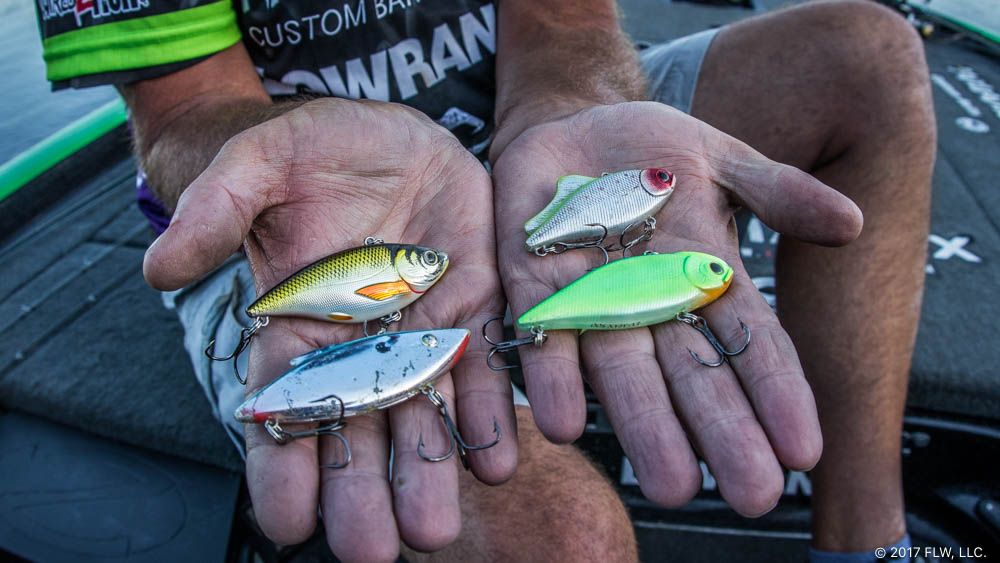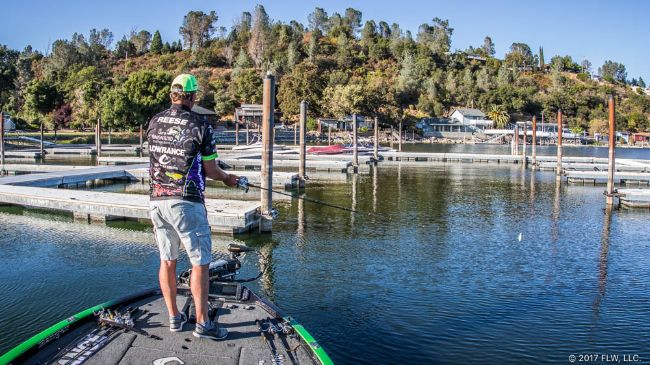Reese’s Lipless Approach Out West
Why to reach for a trap, even if there’s no grass

Growing up out West you wouldn’t figure Jimmy Reese to be much of a lipless crankbait aficionado. No, that’s something more reserved for guys in Texas or the Southeast. But truth be known, Reese, along with many top Western pros, utilizes these loud, speedy baits throughout much of the season – even if there isn’t grass involved.
No doubt on Clear Lake and the California Delta there are strong bite windows in the spring and fall for “trapping” grass, but Reese is a firm believer that these baits can produce just as effectively around structure and other kinds of cover, too.
“Fortunately for me, I live close to Clear Lake, and it offers a lot of different opportunities,” Reese says. “Maybe 20 or 25 years ago throwing a Rat-L-Trap around vegetation in the fall was the ticket for me. Like you hear about on Guntersville or on Toledo Bend, when I’d get hung up, I’d snap the bait free and started catching bigger fish doing so.
“You’re causing a reaction bite. The fish aren’t interested in eating, but you’re making them bite. So, after a while I figured I could make them react to it in other situations.”

When to think lipless
Reese no doubt figured out when to utilize lipless crankbaits outside of grass situations, as have other anglers out West. Rock piles and docks, for instance, attract bait and bass, making them ideal locations for a lipless crankbait to trigger strikes.
“I throw lipless baits now a lot around docks where I’d normally fish a jig,” says Reese. “But they work well around structure, too. If you can find bait and the bass are relating close to the bottom, you can catch fish on a lipless crankbait.
“I’ll have one tied on nine months out of the year,” Reese explains. “You can drag it, you can burn it, you can hop it; really, you can fish almost any situation with it.”
Reese admits that October and November are probably his two favorite months to work lipless crankbaits around hard structure, though most of fall and early winter can be equally as productive.
He prefers water clarity in the 2- to 3-foot range. In cleaner water, Reese prefers to have some cloud cover to help decrease visibility. Triggering strikes is the name of the game, so he doesn’t want the fish staring at the bait for too long.
What to throw
Reese keeps a healthy supply of four lipless crankbait models on hand at all times. His box is loaded with Bill Lewis Rat-L-Traps, Lucky Craft LV 100s, LV 500s and LIVETARGET Golden Shiner Vibration Traps.
“I still love the original Rat-L-Traps for fishing around shallower grass,” says Reese. “Then the Lucky Craft LVs came out, and I realized I loved the 100 size for burning around shallow water under docks – say, less than 3 feet. The LV 500 is great to fish out deeper, 10 feet or more, around docks or rock structure where you want to hop the bait more. And I really like the LIVETARGET trap because it is a more medium-sized bait that, profile wise, is between the 100 and 500. I pitch it around docks mostly in situations that don’t fit the 100 or 500.”
The California pro is a fan of matching the hatch with his bait colors but doesn’t discount bright, flashy finishes and keeps a selection of a few colors in each bait on hand.
For his gear, Reese prefers a Douglas Outdoors XMATRIX 724 rod with 12-pound-test P-Line Tactical fluorocarbon for most of his shallower (2 to 4 feet) dock and rock fishing. If he is fishing deeper with a bigger bait, then he switches to 15- or 20-pound-test fluorocarbon with an XMATRIX 764 rod.
How to fish it
Fishing a lipless crankbait isn’t rocket science by any means, regardless of technique. Most of the time success comes down to knowing when to pick it up and knowing the structure you’re fishing.
“I like to keep it pretty simple when it comes to fishing a lipless crankbait,” says Reese. “As a rule, when the water is warming up you can fish the bait faster. As it begins to cool off you want to fish it more slowly, and that’s where hopping the bait off the bottom can be the best.
“For rock structure I try to go parallel with the ledge or rock pile. A slow retrieve where you barely bump the bottom without getting hung up is ideal. Every now and then you can give it a little hop, but maintaining bottom contact is the most important part.”
It’s all about repetition when dock fishing.
“When I fish docks I make a lot of casts, especially around the pilings,” he says. “A lot of times the fish won’t eat on the first cast, but sometimes will on the third or fourth. You never know, so making accurate, repetitive casts is the best case around docks.”
Way up under the dock near shore, Reese will burn the bait back, trying to deflect it off any rocks or pilings. As he works his way out deeper on the dock, he then switches to more of a yo-yo retrieve.
The nuances of technique and presentation can vary widely from spot to spot and situation to situation, but a lipless crankbait’s versatility makes it a common choice for Reese.
“I love fishing a lipless bait. Sometimes, especially out West, the fish are just so pressured or see a certain bait so often that they need to be triggered to bite,” he says. “It doesn’t matter if it is Clear Lake or the California Delta, I’ve had some fantastic days with a lipless bait when most people wouldn’t think to pick it up. Heck, I’ve even done it on lakes like Shasta or Havasu. It’s not something you’ll throw all the time, but if you keep one tied on I know you’ll put more fish in the boat.”

